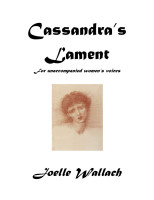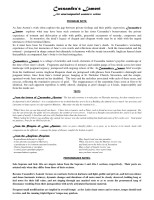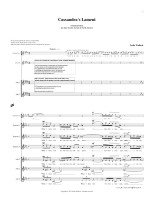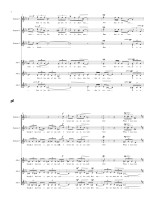Cassandra’s Lament (8')
Cassandra’s Lament, commissioned by the Jane Austen Society of North America, is a collage of melodies and words, elements of Cassandra Austen’s psychic soundscape at the time of her sister Jane’s death. Fragments and shadows of memory and sudden pangs of loss streak across her inner landscape with poignant urgency. juxtaposed with ongoing echoes of the. In Cassandra’s Lament, brief excerpts from the traditional, serene Anglican Requiem chant are juxtaposed with phrases from Cassandra’s distraught and poignant letters, lines from Jane’s formal prayer, hanging at St. Nicholas’ Church, Steventon, and the simple, agonized words Jane uttered on her deathbed. The texts and the melodies associated with each of these recur, and reoccur, reflecting the ruminative process of grief. The reappearances of the serpentine lines seem at first to be identical, but each apparent repetition is subtly altered, changing as grief changes as it heals, imperceptibly and from the inside out.
As Jane Austen’s work often explores the gap between private feelings and their public expression, Cassandra’s Lament explores what may have been such contrasts in her sister Cassandra’s bereavement: the private experience of torment and dislocation at odds with public, prayerful sacraments of serenity, composure and acceptance. In memories, the dead’s legacy of elegant and eloquent words may be at odds with the urgent utterances of their terminal illness.
So it must have been for Cassandra Austen at the time of her sister Jane’s death. In Cassandra’s wrenching experience of loss, her memories of Jane’s own words and reflections about death – both the transcendent and the tortured – juxtaposed in sharp contrast but ultimately in harmony with the steady inexorable Anglican funeral chant that publicly accompanied Jane’s body to its final resting place.






